7 Practical tips for taking photos on high-speed trains
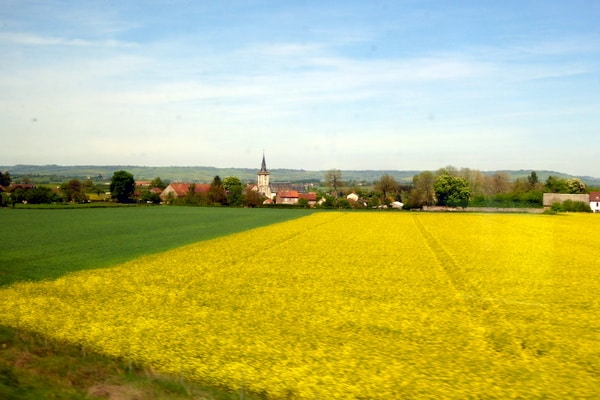
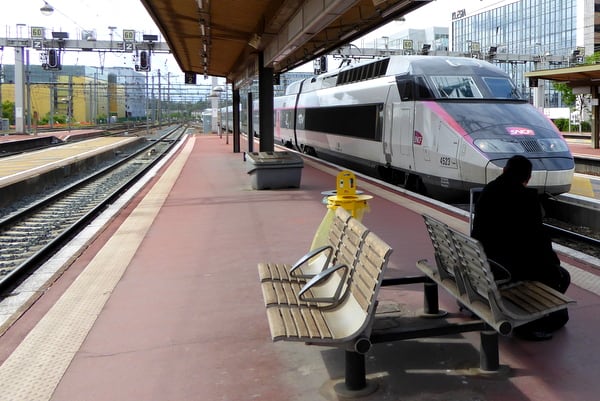
Jerome Levine offers tips for taking photos on high-speed trains with a point and shoot travel zoom camera.
As a former Chesapeake Bay sailor I know that sometimes the journey can be as enjoyable as the destination. When traveling between Paris and Lyon on the high speed (about 200 mph) TGV train, both the ends and the means are also great.
Capturing the journey with a point and shoot travel zoom camera going in both directions taught me a few pointers that could be helpful to fellow photographers. Here are some practical tips when you want to take photos on high-speed trains:
Where to sit
1) Situate yourself in a window seat facing in the direction the train moves (so you can anticipate what is coming into view).
2) If a window is cleaner or has less reflections than another (because of interior as well as exterior light sources) go there.
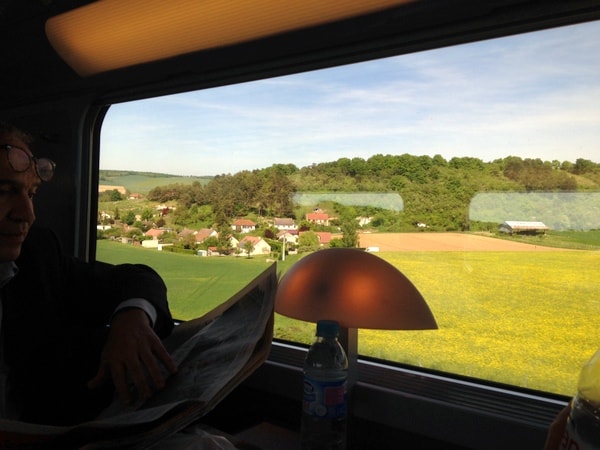
3) Sit on the same side of the train going and returning so you have different views and possibly different lighting.
How to set the camera
4) Experiment with different camera settings to see what works best. Through the glass helps cut down on dirt spots on the window, Sport gives you a chance to slow down movement, Scene gives good color, and shooting in Burst mode enhances your chances of getting a shot without some momentary obstruction (like a pole or wire).

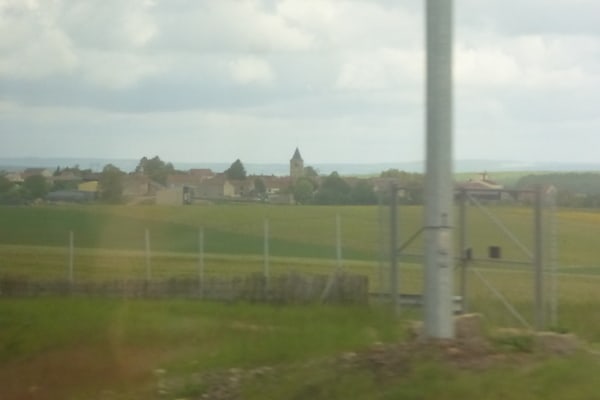
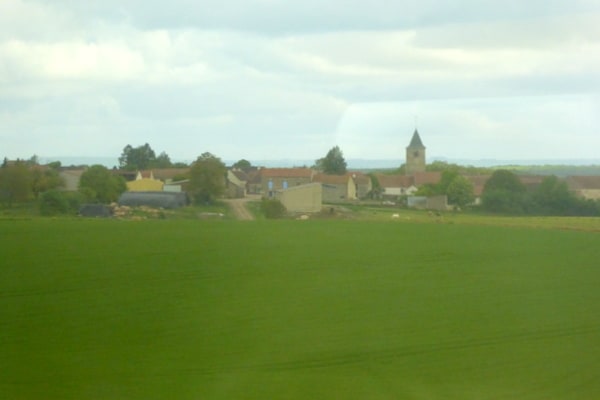
How to shoot
5) Try to shoot in the distance as opposed to close to the train, as the latter may cause massive blurring.

6) Always look to see what is coming up (look ahead) and shoot earlier than normal especially with the benefit of burst setting.
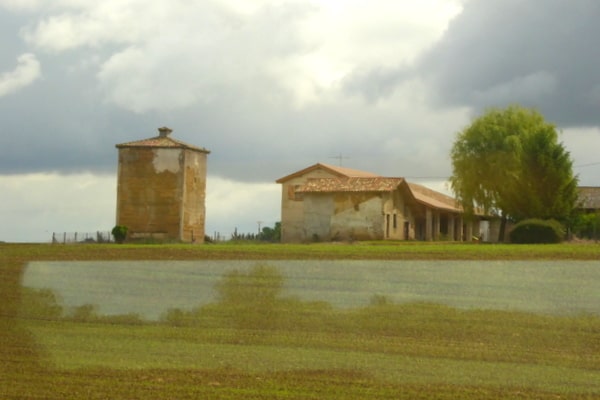
7) Look for scenes with contrasting colors and boundaries (e.g. edge of fields, hedges walls).

While I’m not a fan of post processing (I shoot mostly in jpeg rather than raw), I found myself doing more straightening and cropping than usual with results that really saved some photos!

Do you have any tips to add for taking photos on high-speed trains?
Also on MoreTimeToTravel: Escape from Paris: Take the Fast Train to Lyon
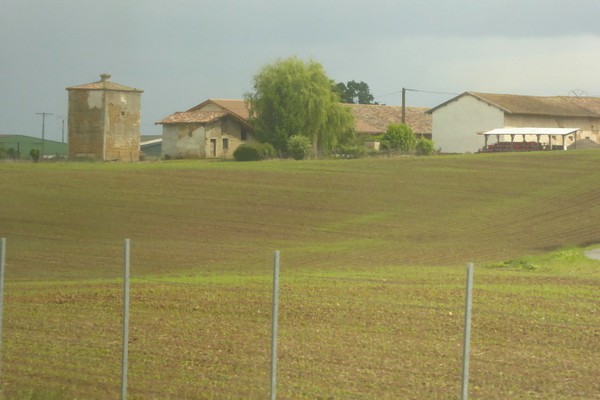
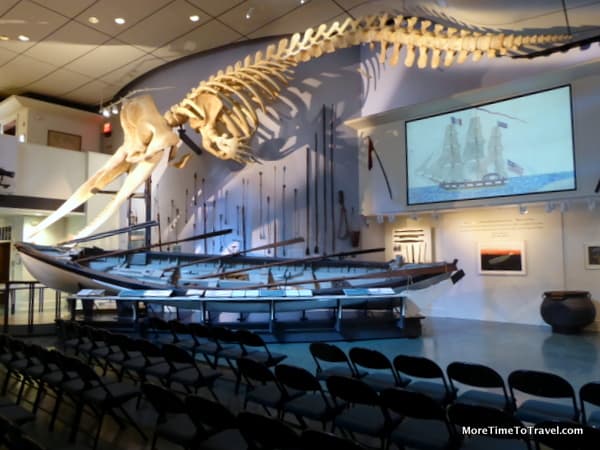
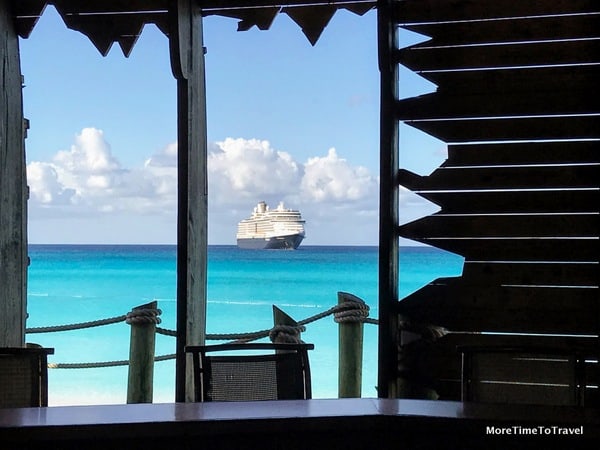

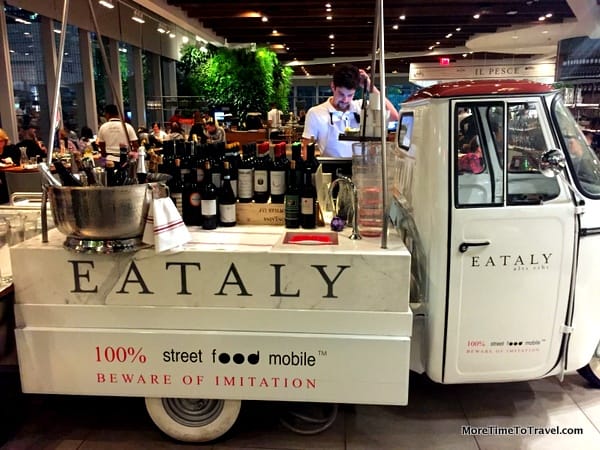

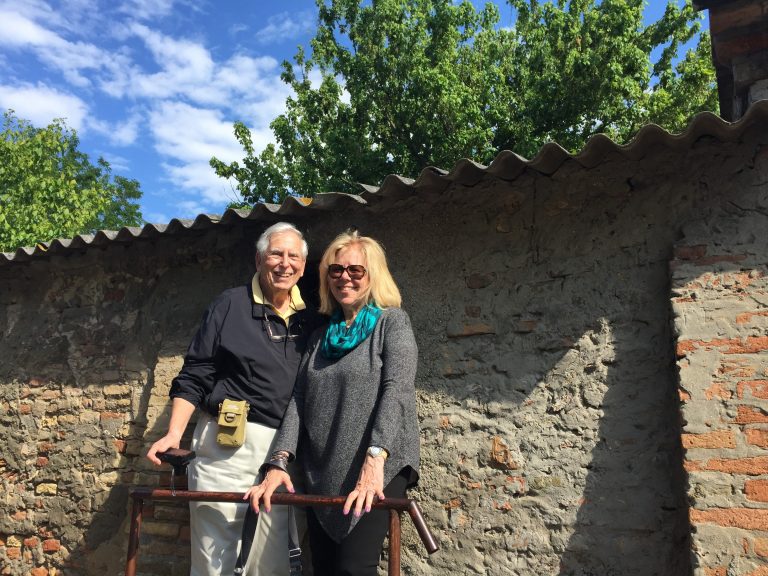
This article is so helpful. I love taking pictures of landscapes from trains, buses and cars, as I travel, and try to do some of what is suggested. However, I did not know about changing settings to Burst, Sport, etc. Thanks so much!!!!
So glad it was helpful!
Thanks for the tips. The settings on my point and shoot aren’t named quite the same as yours, but I’m sure I can find something equivalent. I’m looking forward to experimenting.
I think you are right. Scenery, Sport, Through the Window are usually found within SCN mode while Burst may be a separate setting on the camera. I was using a Panasonic Lumix ZS40 but most of the cameras use similar designations. Certainly all in the ZS series.
I have a Canon. Burst is called continuous mode. The equivalent of scenery is foliage and of sport is kids and pets. Sadly, I cannot find anything similar to through glass, but this post has made me re-look at the various options I do have. Thanks.
Hi Donna: You might try the Program mode to shoot thru glass. I have a Canon and that works for me.
This was useful – thanks! I have just used the setting for shooting through glass but your tips gave me more ideas. I’m going to be taking the Vistadome train to Machu Picchu in September and will use these tips.
What a great upcoming trip. Have visited Peru but not Machu Picchu. Long zoom and wide angle lens could be very helpful. One other suggestion, shoot, shoot, shoot rather than wait for the “perfect” shot. Too many good ones get away by waiting.
That’s so true, Jerome! With digital, there’s no need to wait for the perfect shot. Shoot and delete!
Thanks for the post and useful tips.
Great tips that I’ll be putting into practice shortly with several train trips planned (Panama,Ecuador and Peru) and some bus trips, too! Thanks for reminding me of all the setting options available – I’ll have to start experimenting!
Great tips for taking photos on high-speed trains. Wonder if they’ll translate to the car.
Yes they do. Photos from the car are somewhat easier because you are traveling at about one third the speed. You also have the advantage of being able to see straight ahead thru the windshield as well as through the side windows.
Your tips for taking pics from high speed trains are fun. The best part, for me, is having time to look for the shots. (At least that’s what I say I’m doing when I’m really just daydreaming.)
Thanks for the tips, but I probably will not use them because I get dizzy just looking out the window on a high-speed train!
It may help if you always try to keep the distant horizon in sight (don’t look close to the train or read on the train) and be sure to face in the direction the train is moving. No guarantees though.
Practical tips are always worthy of having. We took the bullet train from Paris to Rheims, France, and really enjoyed the experience. I didn’t even attempt to take photos though because I was so engrossed at staring out the window. Maybe next time!
I know how that can happen but when I return from a trip and review the photos it reminds me not only of what I was seeing but what I was thinking and feeling at the time. A good trade off for the “interruption” but it does take a bit of discipline.
We’ll be traveling on trains in Scotland and Ireland soon. Thanks for the reminder looking for contrasting boundaries. I loved how the colors really pop on your photo.
Thanks for the comment. I didn’t realize how much difference the color and boundaries add until I looked at the photos at home. Realized the same is true when taking photos from an airplane too.
I am forever taking photos from the car and have noticed that they work better with nothing in the foreground. My Canon S95 has nothing like Through the Glass.
I use a Canon S100 (successor to the S95) but mostly for food photographs and in low light situations. Through the Glass setting is on Panasonic Lumix ZS series cameras which are travel zoom cameras and maybe on other brand travel zooms. Very useful for photos from airplane windows too.
Those are great tips Jerome! I didn’t know some of the Lumix cameras have “Through the Window” mode but just looked at my DMC-Zs10 and saw there is a Airline Window mode. I’ll definitely give it a try. I’ve had some success with taking photos of people looking out of train windows in silhouette but haven’t tried burst or other ways to get actual scenery shots. I’ll give it a go next time. Thanks!
That’s it. Photos from other than high speed trains should work well. Avoid shooting scenery very close to the train and if the window is clean and without reflection try the SPORT setting too.
Great advice! I love taking photos on the train but have had limited success. What type of camera are you using with these settings?
The type of camera is a travel zoom. More point and shoot like (no changeable lenses) rather than mirrorless or DSLR. Very common class. I have been using Panasonic LUMIX series ZS (formerly and in Europe TS) for many years. Latest that I use is the ZS40 (it has an electronic viewfinder as well as an LCD screen). Still small and pocketable. The best camera is always the one you have with you.
From Amazon with this link http://www.amazon.com/Panasonic-DMC-ZS40K-Digital-Camera-3-Inch/dp/B00I9OPF2W/ref=sr_1_1?s=electronics&ie=UTF8&qid=1401806454&sr=1-1&keywords=lumix+zs40
Really good advice – I can always use it for trains, buses and cars. It is tricky, but your advice has helped a lot.
This post was so helpful! I will be in Europe in the Fall and part of the time on the high speed trains. I will bookmark this post! Thank you for sharing!
These are excellent tips! I try not to take photos from a train, because well, they are rarely good…but these ideas might certainly help. Thanks.
These are wonderful tips! I’d never think of shooting photos on such a fast-moving train. And, I love all the photos you take.
I’d given up, but maybe if I try some of these tips….
Now THIS is most helpful as I’ve been on many a long distance train/bus in my 3 years living in Asia. Though I have no “through the glass” setting on my Panasonic Lumix, it never occurred to me to use “high speed burst” – brilliant!
Then again, I’m not sure ANY such settings would have helped my train ride from Bagan to Mandalay in Myanmar – we’re talkin’ bouncing no less than *3 foot* in the air (honestly, I feared we’d jump the track for sure!) so I had all I could do to just hang on to my seat – much less snap photos out the window. Ah but it was among my most memorable experiences in Burma. 😉
Hopefully you are still traveling and will try taking more photos. I couple of additional thoughts. Be sure your “anti-shake” setting is on at the maximum for your camera. Usually in the SETUP menu of your camera. Rule of thumb is “one hand for the boat(-hold on) and one hand for you(-camera). Also if you have a viewfinder (EVF) on your camera in addition to the LCD screen, holding it up to your eye helps steady the camera. The first compact point and shoot travel zoom costing under $500 is the one I now use, Panasonic Lumix DMC-ZS40.
From Amazon with this link http://www.amazon.com/Panasonic-DMC-ZS40K-Digital-Camera-3-Inch/dp/B00I9OPF2W/ref=sr_1_1?s=electronics&ie=UTF8&qid=1401806454&sr=1-1&keywords=lumix+zs40
The price of the Panasonic ZS40 camera at Amazon is now less than $400. Over a $50 recent price reduction. In case you were thinking of buying From Amazon with this link http://www.amazon.com/Panasonic-DMC-ZS40K-Digital-Camera-3-Inch/dp/B00I9OPF2W/ref=sr_1_1?s=electronics&ie=UTF8&qid=1401806454&sr=1-1&keywords=lumix+zs40
Can’t wait to have the opportunity to try your pointers. Kept having those obstacles in the way back home from ABQ, though it’s not high speed. Thanks!
In contrast to planes this would be far more challenging! Your suggestions are all fantastic but the “shooting ahead” part is a huge key. No, I’ve never been on a high speed train…I just take lots of photography 🙂